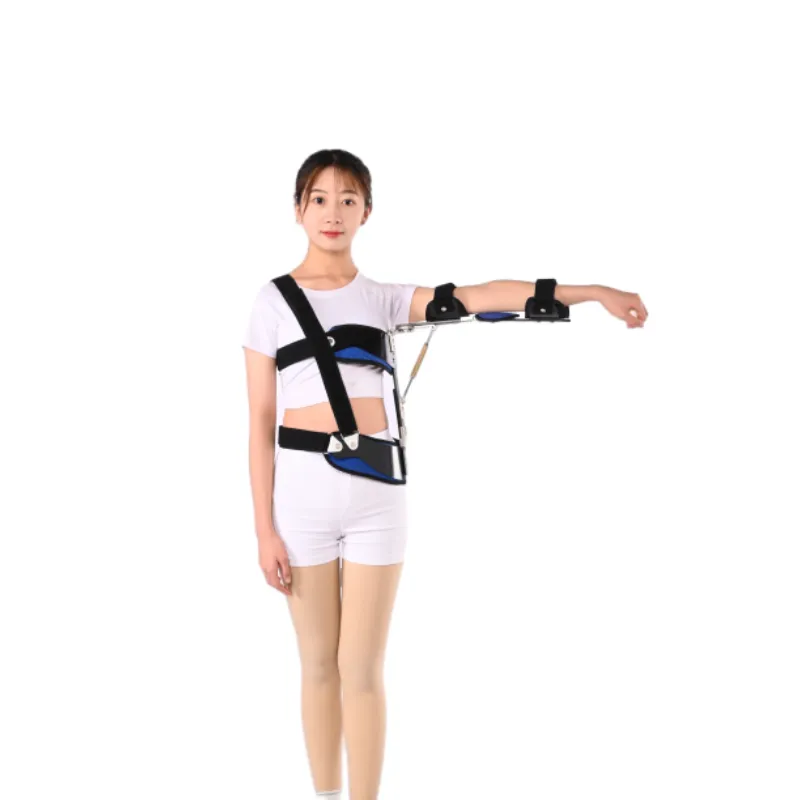Mar . 07, 2025 05:06
Back to list
Wrist Brace
Wrist braces play an essential role in both injury prevention and rehabilitation, providing the necessary support for those dealing with wrist pain or recovering from surgeries. This guide delves into the nuanced world of wrist braces, shedding light on optimized selection and usage tactics that bolster recovery while enhancing daily functionality.
The psychological comfort derived from wearing a wrist brace can often be as significant as the physical support it provides. Knowledge that a brace is protecting the wrist can alleviate anxiety about potential re-injury, allowing individuals to pursue rehabilitation exercises more confidently. Professional guidance from physical therapists is also invaluable, offering tailored exercise regimens that complement brace use and quicken recovery rates. Trust is a cornerstone of any medical aid, and wrist braces are no exception. Trusted brands that conform to medical standards and have a record of successful use in rehabilitation provide added peace of mind. Consumer reviews posted online also offer insights into real-world experiences, although one should remain discerning of overly enthusiastic endorsements lacking empirical evidence. It's equally critical for users to monitor the condition of their wrist brace regularly. Wear and tear can compromise its effectiveness over time, and replacing a worn-out brace ensures sustained support. Authoritative advice from specialists and case studies cited in medical journals universally recommend starting with a professional assessment of wrist conditions before committing to a wrist brace. This step ensures that the chosen hardware aligns with individual therapeutic needs, providing optimal support for daily activities while accelerating the journey toward recovery. In sum, the strategic use of wrist braces—rooted in expert guidance and personal diligence—can significantly enhance recovery experiences, ensuring quicker healing while safeguarding against future injuries.


The psychological comfort derived from wearing a wrist brace can often be as significant as the physical support it provides. Knowledge that a brace is protecting the wrist can alleviate anxiety about potential re-injury, allowing individuals to pursue rehabilitation exercises more confidently. Professional guidance from physical therapists is also invaluable, offering tailored exercise regimens that complement brace use and quicken recovery rates. Trust is a cornerstone of any medical aid, and wrist braces are no exception. Trusted brands that conform to medical standards and have a record of successful use in rehabilitation provide added peace of mind. Consumer reviews posted online also offer insights into real-world experiences, although one should remain discerning of overly enthusiastic endorsements lacking empirical evidence. It's equally critical for users to monitor the condition of their wrist brace regularly. Wear and tear can compromise its effectiveness over time, and replacing a worn-out brace ensures sustained support. Authoritative advice from specialists and case studies cited in medical journals universally recommend starting with a professional assessment of wrist conditions before committing to a wrist brace. This step ensures that the chosen hardware aligns with individual therapeutic needs, providing optimal support for daily activities while accelerating the journey toward recovery. In sum, the strategic use of wrist braces—rooted in expert guidance and personal diligence—can significantly enhance recovery experiences, ensuring quicker healing while safeguarding against future injuries.
Prev:
Next:
Latest News
-
Best Philadelphia Collar Prices - Premium Cervical SupportNews Jul.25,2025
-
Pregnancy Belly Support Belt: Relieve Pain & Boost Comfort | ShopNews Jul.25,2025
-
Hard Cervical Collar-Hebei Jianhang Technology Co., Ltd.|Rigid Neck Support&Adjustable FitNews Jul.23,2025
-
Hard Cervical Collar-Hebei Jianhang Technology Co.,Ltd.|Neck Support&Injury RecoveryNews Jul.21,2025
-
Hard Cervical Collar-Hebei Jianhang Technology Co.,Ltd.|Neck Support&Injury RecoveryNews Jul.21,2025
-
Hard Cervical Collar-Hebei Jianhang Technology Co.,Ltd.|Neck Support&Injury RecoveryNews Jul.21,2025
Have a question? Keep in touch.





















